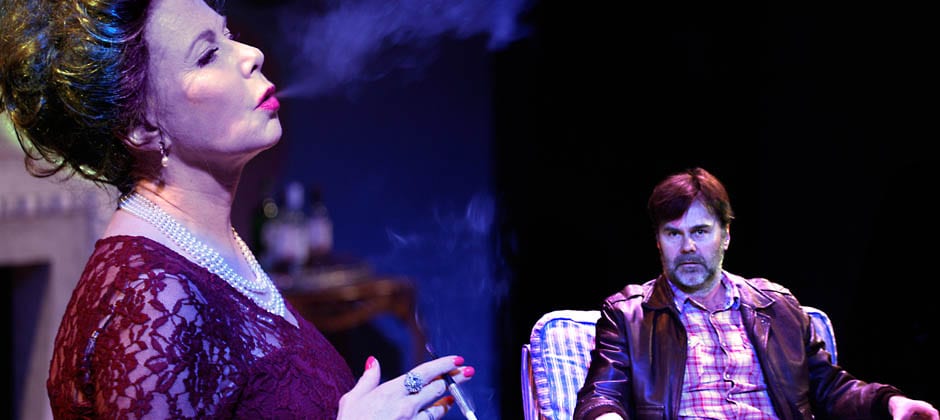I’m a fly on the wall in a regal living room with cream coloured chairs and a lavish fire place. There’s a picture of the Queen mother lying face down, flat on the carpet. A mere coaster for a bottle of gin. The intimate set transports me to Princess Margaret’s apartment, Kensington Palace 1993. The Park 90 stage renders me a voyeur, looking in on the life of an old Royal rebel. No longer the focus of scandal and admiration alike, she has been usurped by ‘golden girl’ Princess Diana. The drama unfolds one evening as Margaret, having acquired incendiary letters from the then Princess of Wales, finds herself being dogged by her own past.
The dialogue is witty and literary. ‘All lies in ruin’, Margaret laments quoting Ozymandias throughout the play. The motif of destruction is visually encapsulated by the plethora of letters, papers and articles proliferating across the carpet. Felicity Dean is charismatic and engrossing as the eponymous princess. She scintillates and seethes, skirting the tragi-comic. The play reaches its peak heat in the back-and-fourths between the Princess and John Bindon (thuggishly portrayed by Patrick Toomey). Dean’s Margaret seems like an older, more jaded rendition of Vanessa Kirby’s princess in Netflix’s The Crown. It is a testament to both actors and the script that the same character is portrayed coherently across her timeline.
Though The Crown gives me some insight into Margaret’s microcosm, Richard Stirling’s script requires an encyclopaedic knowledge of the Royal family to fully understand the drama. Often the dialogue flits past too fast, while some moments are completely lost. The Princess’ dutiful Jeeves, William (acted by the playwright Stirling), has moments of comedy and sympathy. Margaret is prone viciously attacking him, though their lines frequently and confusingly overlap. Alexander Knox’s character also seems unintegrated. In a bizarre side-plot he barges in on the Princess, claiming to be a friend of her son’s. This is an odd precursor before the main action between the Princess and John.
Despite moments when the drama gets lost, the clinchers of the story engaging. This play is far from perfect, but it is enjoyable, especially if you are particularly intrigued by HRH. It is not a transcendent piece of theatre, but at times it is charming. In that respect, it perhaps reflects Princess Margaret herself.

